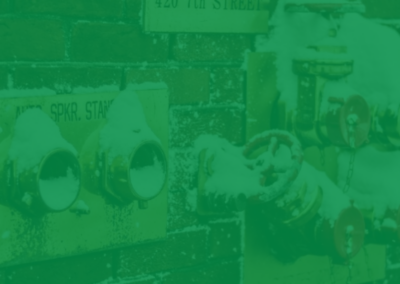What is a Fire Pump? A Guide to Function and Maintenance
What is a Fire Pump?
A fire pump is a critical component of any building’s fire protection system, responsible for maintaining water pressure and delivering water to sprinkler heads in the event of a fire. Powered by electricity, steam, or diesel, fire pumps work by pushing water through sprinkler systems to suppress a fire. Each sprinkler head features a heat-sensitive trigger, like a glass bulb or a two-part metal plug, that activates when extreme heat is detected. Once activated, water flows through the open head to combat the flames effectively.
A properly functioning fire pump is crucial for an activated sprinkler system to deliver the necessary water pressure; without it, severe property damage can occur. Regular maintenance and testing are essential to ensure reliability.
Fire Pump Maintenance: Staying Code-Compliant and Ready
Maintaining a fire pump goes beyond functionality—it’s essential for compliance. Building owners must ensure their fire pumps meet NFPA 25 standards for inspecting, testing, and maintaining water-based fire protection systems. Regular inspections and repairs play a critical role in preventing deficiencies or impairments that could compromise system performance.
Key Tests for Fire Pumps
NFPA 25 mandates specific tests at various intervals to verify pump performance, with the most common tests being the No Flow Condition and the Annual Flow Test.
- No Flow Condition: This test assesses the fire pump’s pressure without flowing water. The inspection includes measuring how quickly the motor reaches the required pressure and adjusting valves and seals as needed. An electric motor test typically takes about 10 minutes, while a diesel motor test requires about 30 minutes.
- Annual Flow Test: This comprehensive test measures the fire pump’s full capabilities, ensuring that water flow and pressure meet industry standards. During the test, technicians record flow and pressure readings and compare them to established benchmarks, including certified shop test curves. Completing an annual flow test may take up to four hours per pump, depending on the setup.
NFPA 25 mandates specific tests at various intervals to verify pump performance, with the most common tests being the No Flow Condition and the Annual Flow Test.
Additional Considerations for Building Owners
When scheduling fire pump inspections, building owners should remember a few important points:
- Service Agreements: Fire pump testing and maintenance are typically included in service agreements. During testing, the pump is temporarily offline, so it’s essential to limit building activities to normal operations to ensure tenant safety.
- Record-Keeping: State regulations require that all test records be maintained and stored electronically onsite. These records include details like the service organization, procedures, test frequency, test results, and inspector information. Ryan Fireprotection provides thorough documentation for easy compliance.
Need More Information?
For more information or to schedule an inspection or maintenance request, contact Ryan Fireprotection.
Join our Fire Pump Basics virtual training on November 6th to learn from our experts how to properly operate and maintain your fire pump system, with a dedicated Q&A to address all your questions!


